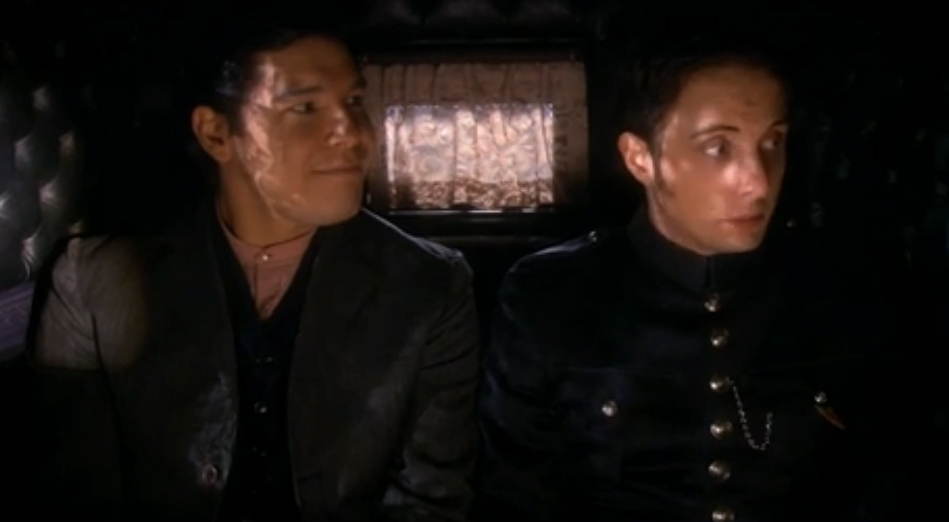RESEARCH JOURNAL REVIEW:
Cutrona, C. E., Wallace, G., &
Wesner, K. A. (2006, August). Neighborhood
Characteristics and Depression: An Examination of Stress Processes. Current Directions in Psychological Science,
15(4), 188-192. doi:10.1111/j.1467-8721.2006.00433.x
I.
Purpose
of the Study (In your own words) –
A.
What were
the authors studying and why?
Authors summarized
multiple studies in this review about how “neighborhoods with poor-quality
housing, few resources, and unsafe conditions impose stress, which can lead to
depression.” These environmental
characteristics increase the negative impact of stressors unique to individuals’
personal life and can hamper the formation of supportive interpersonal bonds
between people.
Why did the authors study
this? It is meaningful for our society to understand the “role of
neighborhoods” in a resident’s potential for developing depression because (1)
Residents often blame themselves mistakenly instead of recognizing their
well-being is genuinely affected “by the context around them” and complications
of their locality (2) outsiders don’t understand the extent these residents of
impoverished areas are negatively impacted “by their surroundings”, and often
erroneously blame these residents’ mental health problems on perceived
personality flaws or race instead; (3) treating each impacted person separately
is much less efficient than dealing with public health threats on a broader
community level. Neighborhoods that subsist with inferior quality resources and
lack the benefits of “integration with more prosperous families” may find
increased instances of social dilemmas related to “threats to mental health.”
B.
What did
they expect to find (i.e., what were the hypotheses?)
Research studies will
find stress links between “neighborhood characteristics and depression.” These
characteristics influence how intensely residents are stressed, how vulnerable
to depression a person is “following negative events in their lives,” and
“interfere with formation of bonds among (other) people” creating limited
interpersonal support systems also leading to lessened “informal social
control,” deficient social support, and substandard family-role performance. “Neighborhood
stressors” often result from scrambling for scarce resources and/or predatory people
inhabiting the neighborhood who pose physical threats to other residents. In
comparative studies of residents in better, less adverse neighborhoods many of
these issues were not as common.
II.
Methodology - Review the basic methods.
A.
How did
they measure what they were studying?
When reviewing other
studies based on “systematic observations” by researchers and resident surveys,
the authors considered how personal vulnerability to depression may be effected
by neighborhood characteristics such as physical features (accessibility to basic
resources like hospitals, reliable public transit, retail stores, recreational
facilities), structural characteristics (percent of neighborhood that are
employed, impoverished, educated, minority), and negative functional
characteristics (unlawful behavior, social disorder). This consideration was
made by statistically getting rid of effects like “individual and family
characteristics such as income, education, employment status, age, and race.”
B.
What type
of people were they studying?
The studies in this review
analyzed residents of high poverty neighborhoods by U.S. Census tracts (roughly
nine city blocks, about 4,000-6,000 residents in each tract), and some studies
broke these units down into smaller block groups or face blocks.
III.
Results
and Discussion –
A.
What did
the researchers find?
Based on comparison to
other studies, researchers found that neighborhood stressors may be imposed by
physical characteristics or neighborhood residents that pose threats to
physical safety. Examples of negative physical characteristics that can cause
stress include: lack of accessible resources, high traffic density, low quality
housing, etc. Ratings related to the quality of housing predicted depression
more often than simple being low income in rural women studied in 2000. Women
who moved out of unsatisfactory apartments into Habitat for Humanity homes,
showed a decrease in reports of sadness. “Lack of access to needed resources is
demoralizing because of the extra effort required to meet daily needs… More
refined measures that capture type, accessibility, and distance to community
resources are needed.”
“Fear of victimization”
is another stressor that impacts the well-being of residents. “Social disorder,
not poverty per se… most directly causes depression in areas with high crime
rates… for both children and adults.” Other studies shows that impoverished
areas with little crime, did not show the same tendencies for depression.
“Vulnerability to
depression following negative events” is more likely in bad neighborhoods than in
in neighborhoods that have more advantages. “Reasons for this heightened
vulnerability may include lack of resources, the absence of role models who
provide hope for personal success, and local norms that promote ineffective
coping and negative interpretations of events.”
Interpersonal
Relationships are put at risk in less advantaged neighborhoods. A 2005 study
showed that areas with high turnover, offer less tendency for people to form
relationships with their community due to mistrusting neighbors due to high
crime rates. “Relationship disruption may have several consequences relevant to
depression, including lower levels of informal social control, inadequate
social support, and poor family-role performance.
This leads to a lack of
“Informal Social Control” in these troubled neighborhoods, people don’t
“monitor or control each others’ behavior and norms that permit antisocial or
maladaptive behavior may arise… leading to problems like job loss or unintended
pregnancies that may turn into depression. A 2002 study showed that
comparatively, nicer neighborhoods express disapproval, alert authorities or
form watch groups to maintain social niceties in their area.
Residents are areas with
high-social disorder often feel their relationships are less supportive,
“because support providers themselves are highly burdened. Living in
impoverished neighborhoods “appears to weaken the protective power of social
resources in people’s lives,” according to a 2003 study. Neighborhood poverty
also predicted lower-quality parenting behaviors” and less marital warmth, both
of which can contribute to issues with depression.
Cutrona’s earlier 2000
study determined that not everyone has the same reaction to living in
unsatisfying neighborhoods. “Some people with particularly resilient
personalities can cope successfully, even in dangerous and disorderly
neighborhoods. Other people are highly vulnerable to depression (and appear to
be significantly harmed psychologically) when they live in adverse
surroundings. The bottom line finding is
that “living in disadvantaged and disorderly neighborhoods eventually erode
optimism and replaces it with hopelessness and negativity.”
B.
Did the
results support or fail to support the authors' hypotheses?
The results support the
authors’ hypotheses. They compared their hypotheses to similar studies.
C.
What is
the meaning of the results?
More attention must be
paid to the influence of contextual factors like neighborhood characteristics
on mental health. Additional studies are
necessary to find the “most effective ways to mobilize neighborhood residents
to meet common goals and improve the context in which they live.”
Neighborhood context has
an impact on feelings of well being, above and beyond personal stressors. By
increasing stressors, intensifying “reactivity to negative life events” and
deterring the growth of healthy interpersonal relationships, neighborhood of
residence can influence a “wide range of psychological processes and merits
further study.”
Comparative studies where
residents were moved into a better area showed better mental health for
residents. “Some of the problems associated with low income people should
actually be attributed to low-income environments.”
The results of this
comparative study mean that changes are necessary for improvements. Suggestions for improving the design of
future studies include: “analyzing family characteristics, using separate
samples of residents to obtain information and outcome measures, study
processes of factors that facilitate change.” In order to most effectively help
these neighborhoods, we must empower residents to organize improvements. City
planners must be mindful when designing subsidized housing and promote
“economically integrated housing,” by avoiding concentrating poverty into
limited areas which breeds “hopelessness, depression and other social
problems.”
“Greater collaborations across
the disciplines of city planning, economics, sociology, and psychology are
needed in generating such data.
IV.
Personal
Reflection –
A.
What are
your thoughts about the study and the questions asked?
I think the study asks
important questions about how we focus studies related to poverty and
high-crime areas with greater consideration paid to the potential for
depression in residents. They asked
important question about the correlation of factors and causality to mental
health issues.
B.
Does the
study relate at all to your interests or life?
This study relates to my
interests in helping the less fortunate and providing more balanced decision
making in city planning decisions and treatment offerings in low-income areas.
C.
What did
you learn that was new to you?
I learned that more
research is needed, and what studies have been done seem to support the
author’s supposition that neighborhood characteristics generally have impact on
the potential for depression in the residents.
D.
Is there
anything missing?
Answered above
E.
What
questions does this study raise for you?
What are good ways to
encourage economically integrated neighborhoods? Can treating community mental
health issues on a broader level be more cost effective than dealing with
individual issues of depression that may one day lead to more costly criminal
impacts?
F.
Do you
have any ideas about how to study this concept differently?
I
am curious if these trends related to neighborhood characteristics have been
measured by researchers outside the United States. An extended review that
included international studies on similar topics would be recommended.





















